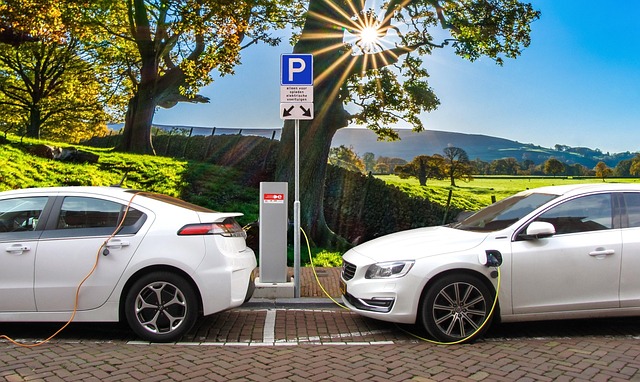Register Car California: Complete VIN Verification Process
Looking to register your car in California? This comprehensive guide walks you through the process, ensuring a smooth transition. From understanding key requirements to navigating VIN verification, yo…….

Looking to register your car in California? This comprehensive guide walks you through the process, ensuring a smooth transition. From understanding key requirements to navigating VIN verification, you’ll learn how to gather essential documents and choose the best registration method. We demystify each step, from application submission to payment, so you’re ready to hit the road legally. Let’s dive into how to register your vehicle in California with confidence, emphasizing the critical role of VIN verification along the way.
- Understand California Car Registration Requirements
- Gather Necessary Documents for VIN Verification
- Perform Vehicle Identification Number (VIN) Check
- Choose an Appropriate Registration Method
- Submit Application and Pay Fees
Understand California Car Registration Requirements

Before registering your car in California, it’s crucial to understand the state’s specific requirements for vehicle identification number (VIN) verification. The VIN is a unique code that identifies your vehicle and plays a critical role in both registration and safety inspections. In California, all vehicles must pass a VIN inspection to ensure they meet federal and state safety standards. This process verifies that your car’s components, including the engine, brakes, lights, and safety features, are in proper working order.
During the registration process, you’ll need to have a valid, up-to-date VIN inspection report. A mobile VIN inspection or verifier can be a convenient option, allowing you to complete this step without visiting an official inspection station. This service provides on-site, instant VIN verification, making it easier and faster to register your vehicle in California. Always ensure that the verifier is certified and reputable to guarantee an accurate and reliable result.
Gather Necessary Documents for VIN Verification

To register your car in California, you’ll first need to gather all the essential documents for a successful vin verification. This process is crucial and involves confirming the vehicle’s identification number (VIN) for accuracy and authenticity. You’ll require various documents such as the title or registration certificate from the previous state, proof of ownership, and a valid driver’s license. Additionally, having your vehicle’s mobile vin verifier or mobile vin inspection on hand can streamline this step, making it easier to verify the VIN digitally with California’s DMV (Department of Motor Vehicles).
Ensure that all documents are up-to-date and accurate to avoid any delays during the registration process. The vin verification is a critical step in ensuring the integrity of vehicle data and preventing fraud. Therefore, it’s advisable to double-check your records before proceeding with the registration.
Perform Vehicle Identification Number (VIN) Check

Before registering your car in California, it’s crucial to perform a Vehicle Identification Number (VIN) check. This step is essential for ensuring that the vehicle’s history aligns with what the seller claims. You can conduct a VIN verification through various online services or by visiting a local DMV office. The process involves cross-referencing the unique VIN number against extensive databases to uncover any reported issues, accidents, or outstanding loans associated with the car.
In California, a mobile VIN verification or even a vin inspection conducted by a professional can be particularly useful. These services offer convenience and accuracy, allowing you to validate the vehicle’s identity and condition before making a significant purchase. By taking this proactive measure, you’re better equipped to avoid potential problems and ensure that your car registration process goes smoothly.
Choose an Appropriate Registration Method

When registering your car in California, understanding your registration options is key. One crucial aspect to consider early on is choosing the right method for vehicle identification number (VIN) verification. The state offers several alternatives, from traditional in-person inspections to innovative mobile vin inspection services.
Opting for a mobile vin verifier or conducting a remote vin verification through an online platform can be a convenient and efficient solution for busy individuals. These methods eliminate the need for lengthy visits to DMV offices or waiting in lines. With just a few simple steps, you can complete the VIN verification process from the comfort of your home or on-the-go, ensuring a smoother registration experience tailored to modern lifestyles.
Submit Application and Pay Fees

After gathering all the necessary documents, it’s time to submit your application for car registration along with the required fees. This step is crucial in ensuring a smooth and legal process. You’ll need to complete the Application for Title and Registration (Form DVF 140) form, available from the California Department of Motor Vehicles (DMV). Fill out the details accurately, including your personal information and vehicle specifications. Remember to include the Vehicle Identification Number (VIN) verification, which is essential for accurate record-keeping and security purposes.
You can opt for a mobile vin verifier or conduct a mobile vin inspection to facilitate this process. These services provide convenient and efficient VIN verification by allowing you to scan and transmit the VIN data digitally. Once your application is complete, mail it along with the necessary fees to the DMV office in your region. Ensure that all documents are in order to avoid delays and complications during registration.
Registering a car in California involves understanding state requirements, gathering essential documents, and completing a VIN verification process. After ensuring all necessary information is accurate, you can choose between online or in-person registration methods, submit your application, and pay the required fees. Remember to keep your vehicle’s registration up to date for legal compliance and convenience.







